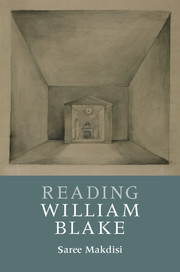Introduction
Published online by Cambridge University Press: 05 May 2015
Summary
I'm not sure that William Blake would have liked the idea of this book. He certainly thought his work needed no explanatory introduction. “You say that I want somebody to Elucidate my Ideas,” he once wrote to a reader who complained to him that his work was too difficult to understand. “But I am happy to find a Great Majority of Fellow Mortals who can Elucidate My Visions & Particularly they have been Elucidated by Children who have taken a greater delight in contemplating my Pictures than I even hoped.” No matter how accessible Blake thought his work was, however, its reputation for difficulty has been sustained rather than reduced by the plethora of guidebooks and handbooks intended to help readers approach what he called his illuminated books. There are now many guides and companions to Blake (not to mention countless essays or articles or book chapters devoted to readings and explications of each one of the illuminated books). Many, going back all the way to S. Foster Damon's 1965 Blake Dictionary, have been written with the primary intention of making Blake more accessible by helping readers decipher or decode particular texts.
And yet there remains a great deal of truth to Blake's assertion that his works need no elucidation. It's not just that the more layers of interpretation we add to our approach to any one of Blake's texts, the more difficult that approach ends up being, but also that if we read Blake through all those layers we run the risk of losing much of what is most exciting and original about his work – we end up reading the layers, as it were, rather than gaining access to the work itself. When I teach Blake to undergraduate students, I urge them to dispense with the commentaries and notes offered by most editions of his work, and to read the words and images on their own rather than as filtered through the commentaries.
- Type
- Chapter
- Information
- Reading William Blake , pp. 1 - 6Publisher: Cambridge University PressPrint publication year: 2015



